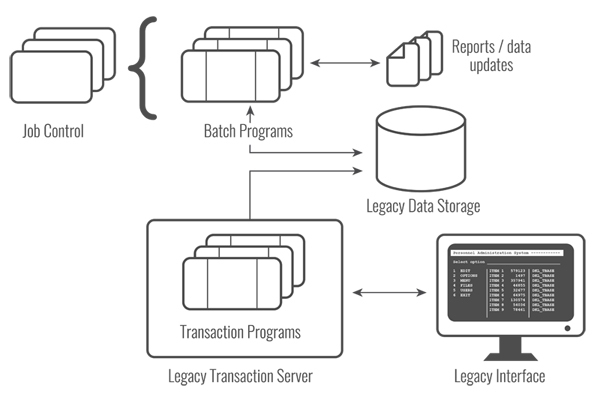In today’s multi-platform, multi-OS and multi-data format corporate computing environments, there is a high demand to make the mainframe systems work with web, mobile devices and, potentially, any device that can be connected to the Internet-of-Things (IoT), in effect, extending the mainframe system to the “modern world.”
In Part 1 of this five-part series, we’ll examine the challenges faced by large organizations running mainframe applications as they contemplate how they will handle increased mobile traffic—while maintaining and/or improving customer satisfaction. Over the next few weeks on the Planet Mainframe blog, we’ll examine the solutions that are available to solve this problem.
Challenges
For many companies this can be a real challenge from a technical perspective: lack of skilled personnel and a sensible aversion to risk. Often, the biggest challenge is that much of their intellectual property (IP)—how to interact with users, and then balance, reconcile and report—is wrapped up in that mainframe code.
Challenges or not, legacy systems must accommodate and be adapted for: growing business, growing web access, new and growing mobile access, and for some, new IoT access.
Legacy Systems
Mainframe systems need to accommodate and adapt as the majority of the world’s financial transactions (72 percent) go through the mainframe. (See What Managers Must Know About … the Mainframe.) With the use of mobile devices growing and with online shopping increasing, the number of these transactions will continue to rise. The conjunction of the two factors drives the high demand.
As those mainframe systems were designed and implemented long before there was any consideration for this type of access, a few challenges exist. First, the IP wrapped up in these mainframe systems—making them work the way the businesses wanted them to work—represents the culmination of literally billions of hours invested. Second, deciphering this IP is extremely complex. And finally, while documentation probably does, and should exist, there will often be some discrepancy between what has been captured in documentation versus what has actually been implemented. The documentation can also lead to misinterpretation.
The demand on legacy systems is increasing as the opportunity to initiate transactions is made increasingly easy to access via new and existing interactive web pages and new mobile phone applications. And let’s not forget about IoT—when those billions of connected items will be able to order their own spare parts (my fridge almost does!).
Business Intellectual Property
“Business constantly evolves, but there are 250 billion lines of COBOL code working well worldwide. Why would companies replace systems that are working well?“ (The Guardian – Cobol Hits 50 Years and Counting.) Between 60 and 80 percent of all business transactions performed worldwide are processed effectively and efficiently by COBOL programs running on mainframes. Those 250 billion lines of code represent a huge financial investment and capture how organizations process their business transactions. Recreating or replacing this investment is an incredibly costly and risky undertaking. Not only are business transactions increasing, but also the average revenue-per-transaction is declining in real terms; therefore, costs are increasingly important to this evolving business challenge.
The typical mainframe environment
Here is a typical mainframe computing environment with multiple online and batch applications:

This infrastructure worked well when used as intended. However, it was not intended to handle web access and associated workloads, mobile access and associated workloads, or IoT and whatever workloads that will bring. So a solution is required to solve this challenge.
What are the solutions?
So how can you go about extending your robust, secure, and reliable mainframe systems to the web, mobile and IoT worlds? Well, it depends on your specific needs, independently of whether the new content goes on a mainframe or another box. The “best” solution will depend on several factors:
- What needs to be extended to be accessible to web, mobile and IoT?
- Will the new workload be different from current workloads?
- What other corporate goals impact the choices?
- What will the future bring?
First, you must consider what needs to be extended to the web, mobile and potential IoT worlds. If you are interacting with end users, it is likely that the primary element of the mainframe that needs to be extended is the online processing environment. If you are interacting with internal users, it could also be the online processing environment, but may also extend to the various outputs of batch jobs. Possibly even the ability to start batch jobs running. It is also necessary to understand your overall goals for your computing infrastructure. Such as:
- Is the goal to move all applications off the mainframe over time?
- Is the goal to move all applications off the mainframe as fast as possible?
- Is the goal to leverage the advantages of multiple different platform types, taking each workload and putting it on the platform that services it best?
- Is the goal to have all this staying on the mainframe?
Over the next few weeks, we’ll answer these questions—we’ll do this by presenting four solutions. Some you’ll be familiar with, others less so. We’ll take a close look at:









0 Comments